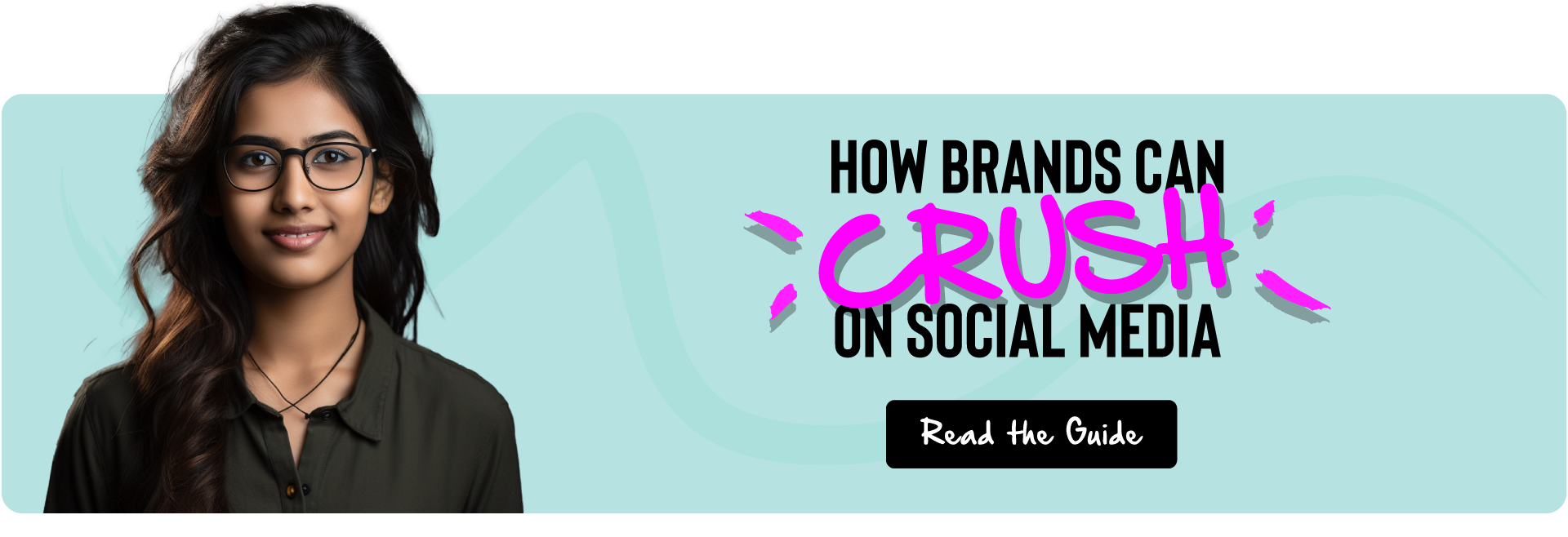🚨 NEW TREND ALERT 🚨
Is Having Multiple Social Accounts On One Platform a Thing Now?

It’s not very often I hear something about marketing that fundamentally shifts my perspective.
This happened to me just now and I had to share.
Most brands have one social account on any given platform, and they dump everything into one feed.
👉 Monday it might be a comparison video
👉 Tuesday it’s a industry challenges video
👉 Wednesday is a silly office video
👉 Thursday is a talking head video
👉 Friday is a person on the street video
If you can start to see a problem with this, then you’re ahead of the curve.
This issue with this strategy is that it may be killing your organic reach.
Many algos are taking after TikTok, moving away from follower based targeting to more interest-based target.
But the algo needs to understand what your account is about. If I’m talking about marketing and real estate and travel and cars and dogs…. the algo has no idea who my audience is.
If I only talk about one thing, then it’s easy.
What some brands are doing is creating multiple accounts within a single platform, one for each type of video series.
I can see some challenges with this, but it makes a lot of sense.
I wonder if more brands will adopt this strategy going forward.
Creator-First Rather than Content-First
Another strategy I’m seeing more of is creator-first rather than content-first. In the past, we’d read an article or watch a video and we are there for the content, we may not know the person behind the content.
Lately I’ve seen the creator front and centre, and lots of different personalities within one brand, each having their own style of content. It’s similar to hiring multiple influencers, but the difference is – they only talk about your brand, and they all know each other, so they appear in each others’ videos.
Think Jake Paul and Team 10 or the Nelk Boys, but only making content about your brand. They do silly videos, a podcast, vlogs, behind the scenes, stunts, etc.
By having multiple accounts / creators with different content themes, you can attract diverse audiences. If you encourage cross-promotion between accounts, you can help each others’ followers discover the other accounts / creators, ultimately benefiting your overall brand.
You could do merch, other brand / partner collabs, in-person events, product-line expansions, bigger media exposure such as TV series…
How to Implement this Strategy
Typically, your content marketing strategy would start with some base level research and planning stage where you:
- Understand your audience
- Understand what content they like to consume
- Understand where they like to consume
After carefully creating content pillars that are designed to engage, entertain, and educate your audience, you begin to dive deeper into the planning, execution, and scheduling.
This works similarly.
To implement a strategy of creating multiple accounts within a single platform, follow these steps:
Find the Right Talent: Look for creators who align with your brand’s values and voice. Consider their experience, creativity, and ability to engage your target audience.
Provide Guidance and Brand Guidelines: Clearly define your brand’s identity, voice, and messaging. Provide creators with guidelines on tone, style, and content themes to ensure consistency across accounts.
Allow Creative Freedom: While providing guidelines, give creators the freedom to experiment and innovate. Encourage them to bring fresh ideas and perspectives to their content.
Establish a Budget: Allocate a budget for each account to cover content creation, promotion, and any other necessary expenses. Consider investing in tools or resources to support creators.
Create a Posting Schedule: Develop a consistent posting schedule for each account to maintain audience engagement. Consider peak times for your target audience and vary content types to keep it interesting.
Measure Engagement: Use analytics tools to track the performance of each account. Monitor metrics like views, likes, comments, and shares to gauge audience interest and adjust strategies accordingly.
Explore Different Platforms and Mediums: Consider leveraging various platforms and mediums, such as video, podcasts, and in-person events, to reach a broader audience. Each medium has its strengths and can help you connect with different segments of your audience.
Foster Community Engagement: Encourage creators to interact with their audiences and build a community around their content. This can lead to increased brand loyalty and word-of-mouth promotion.
Be Patient: Last but not least, it should go without saying – building a following takes time. Stay committed to your strategy and be prepared to iterate based on feedback and performance data.
Implementing this strategy requires careful planning, collaboration with creators, budget, time, and a willingness to adapt based on feedback and data. By leveraging the strengths of each platform and medium, you can create a cohesive brand experience that resonates with your audience.
Challenges With this Approach
Challenge 1: Finding the talent – where are you going to find a group of people who are amazing at creating content and who all know each other, and who are available, and fall within budget?
Challenge 2: Budget – I mentioned budget in the first challenge, but it needs to be stated again. Many brands won’t be able to afford to do this, making this strategy moot.
Challenge 3: Lack of control / brand dilution – as creators often like to walk the line and push boundaries of what is acceptable and appropriate, you are bound to run into a scenario where they misrepresent your brand to the point where you lose touch of your brand identity. The brand no longer has a cohesive thread, it becomes too many things to too many people. Or they post something that damages your brand’s reputation. You also run the risk of the creators becoming hated and irrelevant, and as they decline in popularity, your brand sinks with them.
In response to these three legitimate challenges or concerns, I think the DNA of the brand could still permeate throughout each pillar or video series without diluting it or changing it. You need to carefully guide and nudge them back or track or implement some kind of guardrail such as an approval process. But it would allow each series to find the audience who likes that content, but not the others.
Addressing the other two points, yes, it expensive, and finding the right talent will be difficult. But, you can do what you can with what you have such as using in-house talent, or hiring smaller creators for a shorter duration. It may still be a viable strategy even considering these challenges.
As social media continues to evolve, I could see this being a thing more brands adopt in the future.

- Related post:
How Patek Philippe Could Use Storytelling Marketing
Branding is Playing the Long Game
If you don’t plant seeds, there will be nothing to harvest.
Branding and content marketing are a lot like planting seeds. Will it give you something to harvest tomorrow on next week? No, probably not. But over time it will, and it may be just the thing that carries you through the long winters.
Paid ads, on the other hand, is a lot like picking what’s already grown. That may be enough to keep you going for a while, but you’re not the only picker out there… and picking gets expensive.
What happens when your ROAS is in a steady decline and your CAC eats up all your margin?
Branding is a way for you to attract customers organically without the reliance on ad spend. This is because you’ve established market salience through an omnichannel content marketing strategy. You have shown your expertise, authority, and trust through various forms of content from – video, podcast, blogs (not just your own, but as a guest), webinars, events, social media on multiple platforms.
With this approach, you can eventually scale back your paid media spend and reach critical mass.
Reaching Critical Mass in Business
What is critical mass?
In the context of business, critical mass is a term used to describe a company that has reached a sufficient size, scale, or momentum to carry itself on its own without the reliance on paid media. Customers come to you because you have a trusted name. People aren’t finding Nike by searching, “comfortable running shoes for men.” No, they are going to Nike.com. Nike has built a brand that has meant something to a lot of people for decades. To some Converse, New Balance, Fila and Adidas has done that for them.
What is Branding?
So what is branding?
Branding is more than just a logo or a name; it’s the holistic representation of your business’s identity, values, and promise to customers.
It’s the story you tell, the emotions you evoke, and the experiences you create. Effective branding sets you apart from competitors, builds trust and credibility, and fosters loyalty among customers.
It’s the cornerstone of your marketing efforts, driving recognition, preference, and ultimately, growth. Investing in branding is not just about creating a memorable logo or slogan; it’s about crafting a compelling narrative that resonates with your audience and creates lasting impressions.
An investment into branding will allow you to scale back on your ad spend over time and allow your name to attract customers.
The winter is coming, my friends. Bundle up.
So instead of running a business solely on ads, you should instead look to branding and content marketing (this includes social media marketing) that allows you to demonstrate your brand values in an interesting and entertaining way.
Once you’ve established your expertise, authority, and trust in the marketplace, and you target the right audience, once they have a pain in which your solution can solve, they will think of you first and come to you.
It’s all about branding.
The Importance of Branding
Why is branding important?
One of the main reasons why branding is so important is market differentiation. I’ve written a lot about the idea of – you either have a brand, or you have a commodity.
Essentially, what is your brand about if you cannot talk about your product? What is your social feed about if you can’t talk about your product? Whatever that thing is, is the DNA that is baked into your brand and what it stands for. This is how North Face is different than Patagonia, which is different than Arc’teryx. Features and ingredients can be copied. Package design can be mimicked. But branding is much more difficult to replicate. This is why branding is so important – to create clear distinction in the minds of the consumer.
I talk about that in this post – The T-Shirt Theory of Branding.
On a more practical level, branding is also a way for you to attract customers organically without the reliance on ad spend. This is because you’ve established a strong market saturation through your expertise, authority, and trust. With this approach, you can eventually scale back your paid media spend and reach critical mass.
The winter is coming, my friends. Bundle up.
So instead of running a business solely on ads, you should instead look to branding and content marketing (this includes social media marketing) that allows you to demonstrate your brand values in an interesting and entertaining way.
Once you’ve established your expertise, authority, and trust in the marketplace, and you target the right audience, once they have a pain in which your solution can solve, they will think of you first and come to you.
It’s all about branding.
The Challenges of Branding
What are the challenges or drawbacks of branding?
I’ve been touting the benefits of branding, or brand building, but as discussed earlier about planting seeds, often these efforts take a long time to see a return. Speaking of return, you cannot think of ROI when it comes to branding. It’s impossible to measure.
Think of it as a long-term investment.
As with any investment, you will not likely reap what you sow this week or next month, but at some future state.
Branding is not sales, branding is all about making future sales easier.
Most brands don’t have the financial runway to wait around for their branding efforts to take off.
- Related post: The T-Shirt Theory of Branding
- Related post: The Power of Branding: John’s Family Premium Organic Garlic
- Related post: Why You Don’t Want to Run a Business that Relies Solely on Ads
Related Posts
Need help with your marketing activities?
If you’re looking to make a move with your marketing, reach out to us. We are priced fairly, we’re straight shooters, and are the very best at what we do.








